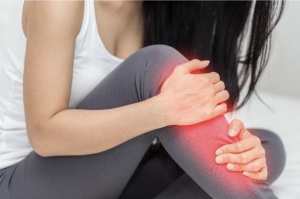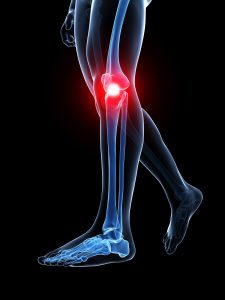Medial Tibial Stress Syndrome
You wake up to see a beautiful, sunny morning and consider going for a pleasant, stress-relieving run. You limber up and contemplate the mileage you’re about to undertake before you feel shin pain.  This soon turns into pain every time your foot hits the ground and doesn’t seem to want to go away. If this happens repeatedly during medium-to-high impact exercise, it’s only natural to be concerned. You start to Google, and your pain starts to sound like Medial Tibial Stress Syndrome.
This soon turns into pain every time your foot hits the ground and doesn’t seem to want to go away. If this happens repeatedly during medium-to-high impact exercise, it’s only natural to be concerned. You start to Google, and your pain starts to sound like Medial Tibial Stress Syndrome.
What is this it? Will it go away soon so I that you can continue running? We aim to answer these questions in this blog.
What is Medial Tibial Stress Syndrome?
Shin Splints, otherwise known as Medial Tibial Stress Syndrome, is an exercise-induced injury. Pain typically occurs during movement that requires excessive force of the foot dorsiflexors (the muscles that bring your toes up towards your knee) (1). It is a very common issue, which is present in 4% to 19% of athletic populations (2). It isn’t a serious condition and will often improve after seeing a competent manual therapist.
Why does shin pain occur?
Medial Tibial Stress Syndrome primarily occurs due to the body not being used to the load being applied to it. Below are other risk factors:
- Increased range of ankle motion
- Navicular drop (dropped arch)
- Orthotic use
- High BMI
- Female gender
- External hip rotation
- Previous occurrence of Shin Splints (McLure & Oh, 2021)
The reasons behind these risk factors are unclear; however, it is assumed that a lack of foot arch and increased range of ankle motion causes Shin Splints due to the lack of a rigid lever that absorbs ground forces. Also, a high BMI score will inevitably cause more weight to be transmitted through the feet, thereby causing more pressure being exerted on the muscles of the shin.
How is shin pain resolved?
Shin Splints treatment starts out with activity modification and exercises. The good news is that it rarely requires surgery. Considering the abundance of information, I have compiled a list of various treatment options and how they have performed in studies.
Stretching & strengthening
Daily stretching with eccentric calf training has been shown to work until symptoms improve. Abdominal, gluteal and hip muscle strengthening can improve your running mechanics and prevent other lower leg injuries.
Footwear
Good quality, shock-absorbing footwear can reduce the incidence of Shin Splints, as long as they fit properly, you haven’t drastically changed your footwear type and you replace them every 250-500 miles.
For more information, please see our blog ‘’What running footwear should I be using?’’
Orthotics
Orthotics could help, but as stated in this blog, they could contribute to causing Shin Splints.
Manual therapy
Manual therapy for this purpose consists of holistic, kinetic chain correction and spinal/pelvic realignment. This needs to be done alongside other interventions (mainly exercise-based).
Balance training
Proprioceptive, or balance training, can help to increase the efficiency of postural stabilising muscles and improve the body’s reaction to running on uneven surfaces.
Extracorporeal shockwave therapy
Extracorporeal shockwave therapy has shown to have mixed results (with only a small minority of good quality research studies proving its’ effectiveness) and can be expensive.
Injections
Cortisone (anti-inflammatory medication) has been shown to work but, like in most cases, this should be used as a last resort due to the long-term effects on the body. For more information please see our blog ‘’Should I get a steroid injection?’’ (5).
Hopefully this is answers a lot of your questions.
For any further questions, please don’t hesitate to ask:
0161 209 2980
info@movementandwellbeingclinic.co.uk
Ed Madeley M.Ost
References
- Merskey H, Albe Fessard D, Bonica JJ, Carmon A, Dubner R, Kerr FWL, Lindblom U, Mumford JM, Nathan PW, Noordenbos W, Pagni CA, Renaer MJ, Sternbach RA, Sunderland S. Pain terms: a list with definitions and notes on usage. Recommended by the IASP subcommittee on taxonomy. PAIN 1979;6:249–52
- Glitsch, H. G., Electrophysiology of the sodium-potassium-ATPase in cardiac cells. Physiol Rev. 2001 Oct; 81(4):1791-826
- Alban Latremoliere, Clifford J Woolf (2009) Central Sensitization: A Generator of Pain Hypersensitivity by Central Neural Plasticity 2009 Sep;10(9):895-926. doi: 10.1016/j.jpain.2009.06.012.
- Finan PH, Goodin BR, Smith MT (2013) The association of sleep and pain: an update and a path forward.J Pain.; 14(12):1539-52.
- Rev Neurosci. 2017 Feb 1;28(2):203-218. doi: 10.1515/revneuro-2016-0067.
